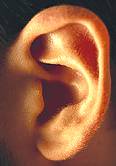
MONDAY, Aug. 30 (HealthDay News) — Although people move their mouths when they communicate in sign language, scientists have debated whether the lip movements were part of signing or whether they’re connected directly to spoken language.
A group of British researchers would choose the latter: In a new study, they found that when people use British Sign Language, their hand and lip movements are guided by separate parts of the brain and are not part of the same sign.
The study included both deaf and hearing sign language users who sat in front of a monitor with a video camera. In one session, they were shown sets of pictures and asked to sign the name of each item. In another session, they were shown those words in English and asked to translate them into British Sign Language. The plan was to show the pictures so rapidly that the individuals would make some mistakes — the types that would help show how language was processed.
When they analyzed the videos, the researchers found there were many cases in which a person’s hands and mouth appeared to be doing something different.
If a participant was looking at pictures and made an error, the hands and mouth would usually make the same mistake — for example, signing and mouthing “banana” when the picture was an apple. However, when the participants were translating words, the hands made the same kinds of mistakes but the mouths didn’t, which suggests that lip movement isn’t part of the sign.
“In essence, they’re doing the same thing as reading an English word aloud without pronouncing it. So they seem to be processing two languages at the same time,” study author David P. Vinson, of University College London, said in an Association for Psychological Science news release.
British Sign Language, which developed naturally and is mentioned in historical records as far back as 1576, is a separate language from both English and American Sign Language. Most people who use British Sign Language are bilingual in spoken English. Mouthing English words may help deaf people develop literacy in English, Vinson explained.
The study appears in the current issue of the journal Psychological Science.
More information
The British Deaf Association has more about British Sign Language.

